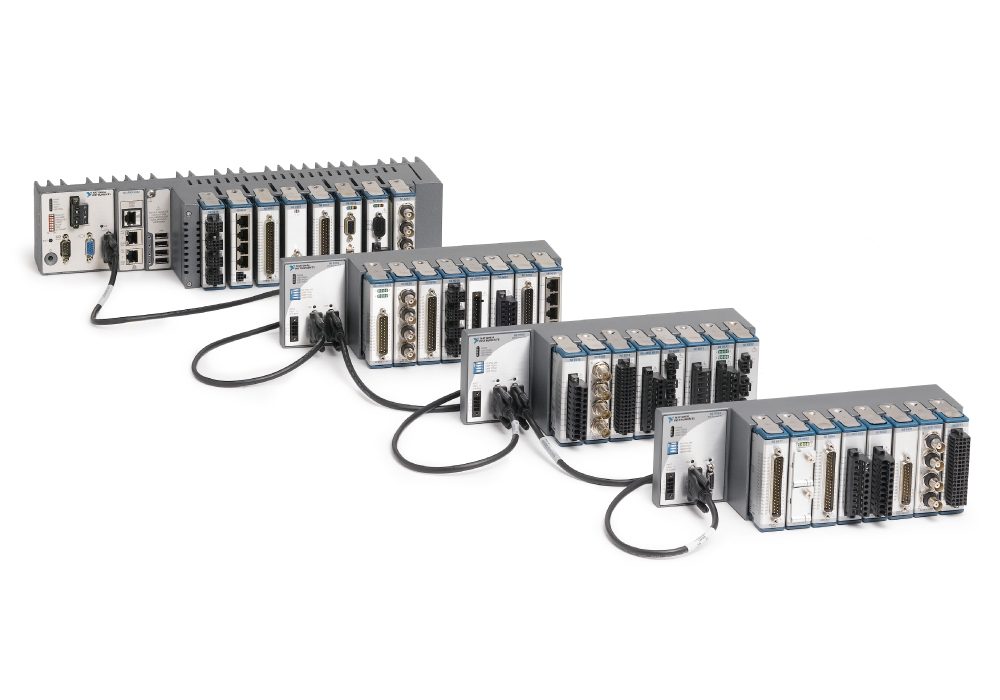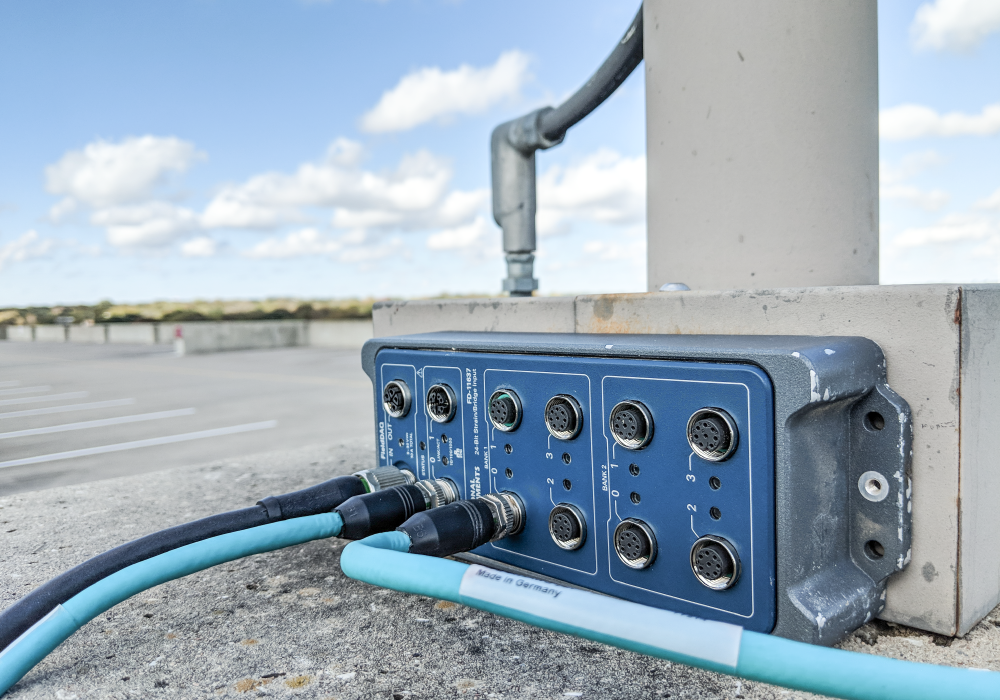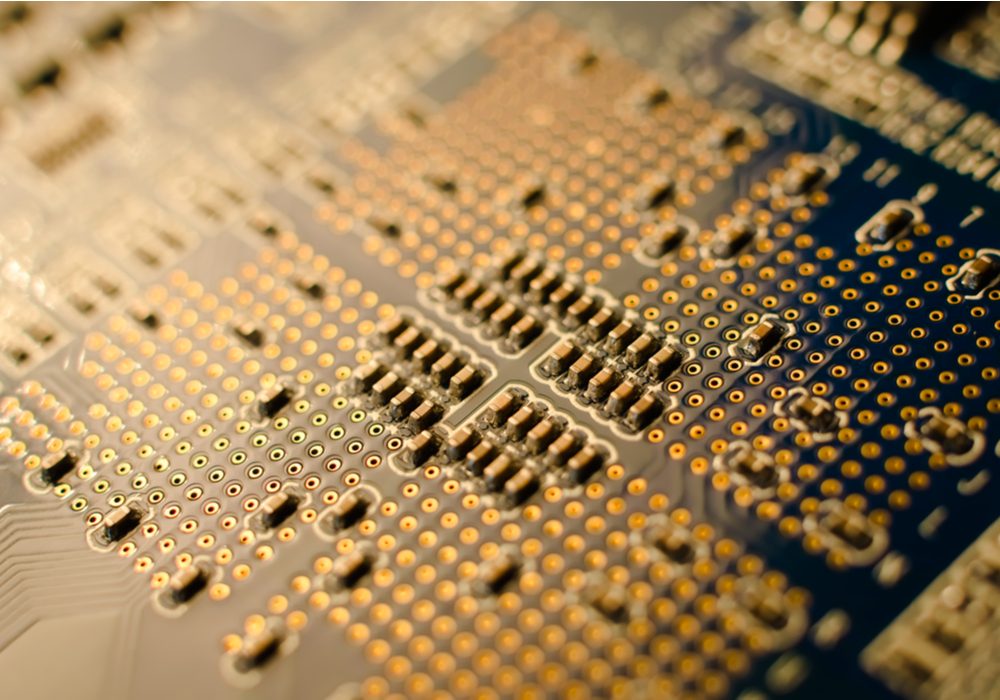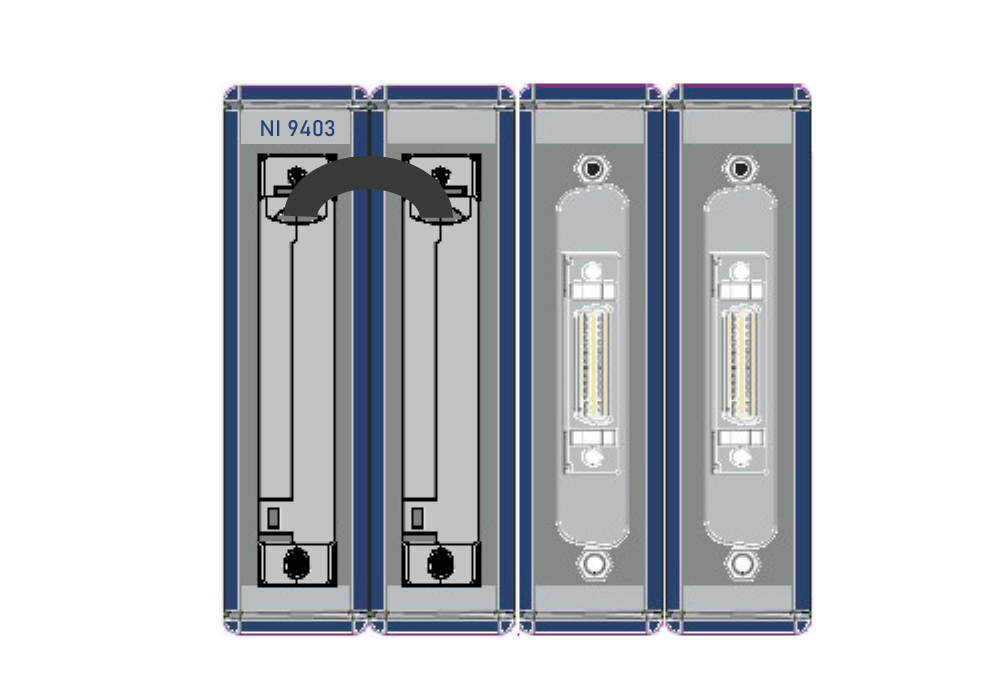High-Precision Measurement (TimeSync)
Typical examples of high-precision measurement include data accuracy and positional accuracy, but here we refer to TimeSync (Time Synchronization) = time synchronization accuracy.
When many channel signals are to be captured at one time, multiple measurement instruments are often configured to operate side by side, and the challenge is how to align their measurement start times.
We have the following TimeSync example. We inserted measurement modules into multiple NI PXI chassis and realized a highly accurate time-synchronous measurement of more than 1000 CHs using a single PXI synchronization module and a measurement driver for synchronization.

Special Environment Measurement

Wide operating temperature range and shock resistance are required for measurements in application-specific experimental facilities and special vehicles.
NI offers excellent products to meet these requirements, such as ComactRIO, Field DAQ, and PXI, but selecting the right product is essential to maximize its performance and effectiveness. Based on our extensive experience, we can propose the best system for your environment.
For example, we are developing a measurement system using PXI equipment, which enables high-speed, high-precision measurement even in high-gravity environments, and a measurement system using ComactRIO for use on large, heavy machinery that is constantly subjected to vibration.
FPGA (High-Speed Real-Time Processing)
FPGA (Field-Programmable Gate Array) is an LSI that can be reconfigured using a program. High-speed processing equivalent to hardware implementation can be rewritten at any time using software.
This rewritable feature is used in prototyping and small-lot mass production of high-speed digital processing circuits and embedded products.
Although FPGA programming primarily uses dedicated languages for digital circuit design such as VHDL, it is now possible to program Xilinx FPGAs using NI's LabVIEW.
We have the following two examples. One is real-time image computation processing using NI's FlexrRIO image processing board (NI1483R). The other is an embedded control in a remote location that is not easily accessible by humans, using NI's FlexRIO controller.

Getting Started with LabVIEW FPGA
https://learn.ni.com/learn/article/getting-started-with-fpga
What Is the LabVIEW FPGA Module?
https://www.ni.com/en/shop/electronic-test-instrumentation/add-ons-for-electronic-test-and-instrumentation/what-is-labview-fpga-module.html
GPGPU (High-Speed Parallel Processing)
PC graphics cards are equipped with a graphics processing unit (GPU), i.e., a processing unit specialized for parallel computation and pipelining for real-time image processing (e.g., 3D), such as CAD and games. The technique to use GPU for purposes other than image processing is called GPGPU (General-Purpose computing on Graphics Processing Units). GPGPUs require programming in specialized languages such as CUDA and OpenCL. Currently, CUDA, which is specialized for Nvidia GPUs, is the most common.
In the case of Nvidia GPUs, the key to speeding up the process is to make good use of a small but fast memory called SharedMemory.
We have experience in real-time volume rendering of 3D data using GPGPUs, as well as in the acceleration of data processing for medical applications using GPGPUs (8 times faster than CPU processing)

Special Modules/Sensors
〇 Optical input/output module
In environments with high electromagnetic fields and other external noise, noise suppression is important when digital signals are used for communication between devices.
Although the use of a 24V module or operating signals such as RS-422 could be considered, we decided to use optical signal communication at the customer's request.
Although the cRIO series from National Instruments did not have a module that could directly handle optical signals, we constructed a system using an optical communication module from IRS, a third-party company.
〇 RS-422 input module
We created an NI Compact RIO module with custom terminals for RS-422 signal input to match the customer's equipment.
The two modules on the right input the RS-422 signal from the customer device, the second module from the left converts the RS-422 signal to a TTL signal, and then the leftmost NI9203 receives the signal from the device as a TTL signal.
※ Please consult us about custom-made products, overseas products, custom modules, and special sensors.

Practical Application Support for Advanced Technology Research Results
〇 Ultrafine super inkjet system
〇 Thermophysical property measurement system
〇 SS-OCT, SD-OCT, JM-OCT (optical coherence tomography)
〇 Compact MRI (nuclear magnetic resonance)
For more information, please contact us.

